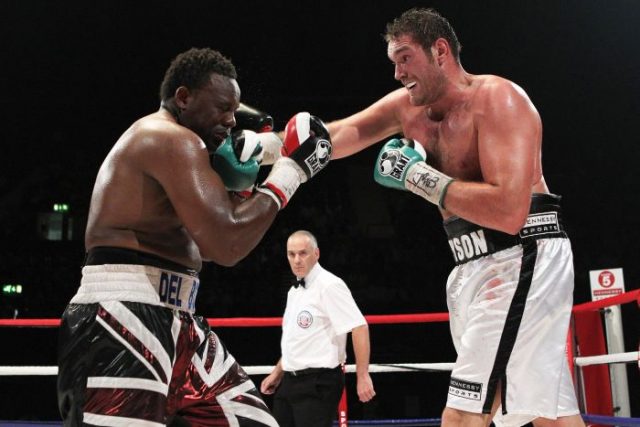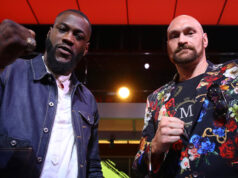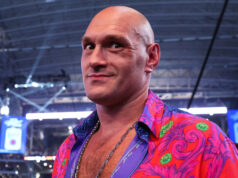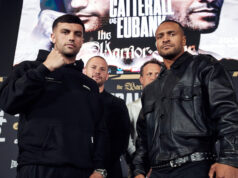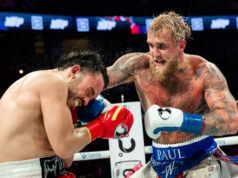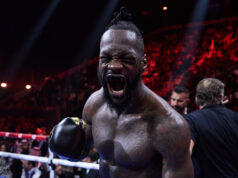Tyson Fury vs. Dereck Chisora Rematch Analysis:
When they first met at Wembley arena in the middle of 2011, Tyson Fury and Dereck Chisora brawled away for twelve competitive rounds. Exchanging leather, the two men put their unbeaten records on the line, accepting of the harsh consequences, with Fury picking up a twelve round decision victory.
A fight is a fight, but circumstances change, and things are different now for both Fury and Chisora. The complexities of boxing, in and out of the ring, have made it so that a rematch between the pair now makes sense. In this first part of my preview package to their rematch, read on to find out exactly what has changed to make Tyson Fury vs Dereck Chisora II a fight of significance.
Different physiques
Where Dereck Chisora once was cumbersome, he is now streamlined. When he enters the Phones4U arena in Manchester for this rematch it is likely he will weigh well below that which he did for his first encounter with Fury. Back then he scaled closer to nineteen stone (266 lbs) than eighteen (252 lbs). Since then he has slimmed down to somewhere between sixteen (224 lbs) and seventeen stone (238 lbs), depending on the fight in question.
It’s an improvement many didn’t see coming. Within twelve months following his loss to Fury, Chisora would lose to Robert Helenius, controversially, Vitali Klitschko, heroically, and David Haye, conclusively. His four defeats weighed heavy on his fifteen wins, and when he emerged for his comeback fight with Hector Avila in early 2013 at his heaviest weight since the Fury match many assigned him to the box marked ‘former prospect’. Little did we know that Chisora had barely got going.
A matured Chisora has since lost weight gradually, while beating the then-unbeaten American contender Malik Scott, the frustrating Kevin Johnson and decent Europeans, Edmund Gerber and Ondrej Pala. It’s a clear sign that the Finchley fighter is in better shape, and his performance is improved as a result.
Fury’s weight has, on the other hand, fluctuated greatly since that first fight with Chisora. In 2012 he appeared in his best physical shape, generally weighing between seventeen and eighteen stone, but cancelled fights have hampered his development.
Fury was slightly heavier for his up and down fight with Steve Cunningham early last year, but then had around ten empty months inconsequentially waiting for David Haye to fight him. By the time he re-entered the ring earlier this year he was heavier than he had ever been before in his professional career.
Slightly enhanced resumes
Fury may have been heavier in recent fights, but there is no doubt that he has continued to garner attention since his first fight with Chisora.
It’s arguable that the win over Chisora remains to this day Fury’s most important and best win, but he has added some relevant names to his list of defeated opponents since, such as Steve Cunningham and Kevin Johnson.
Granted, Cunningham is a career cruiserweight-turned-heavyweight and Johnson has spent much of his career in a state of melancholy underachievement, but they were both decent wins at the time of their achievement. Cunningham is an especially relevant one, given he was coming off a controversial points loss to Tomasz Adamek at the time of fighting Fury, and he then went on to defeat Amir Mansour following his loss to Fury.
Chisora has lost one in three, on average, since the first Fury fight, but those defeats came in a condensed one year period. It is also worth noting that he has evidently matured since, with less hijinks outside of the ring, an improved physique and a five-fight winning streak to signify his rejuvenation.
The defeats are not to be glossed over, however. His loss to Helenius came courtesy of some controversial scorecards, with two judges giving the Finn a 115-113 verdict, while most pundits and onlookers saw a very different fight. Chisora used that defeat as a motivator when given a surprise opportunity to fight Vitali Klitschko. He pushed Vitali harder than he had been pushed in a long time and, in spite of losing fair and square, improved his fighting reputation in the process.
A five round knockout loss to bitter rival Haye was a make or break moment for Chisora, but he appears to have swallowed his medicine, coming back last year with a bang in the form of four wins inside the distance.
What do the changes mean?
Chisora – a man who once reveled in his bad publicity – has become prudent with his words. A series of high profile losses have clearly been a crystallizing period for him, a period which he has emerged from with greater credentials as a heavyweight contender.
Fury has struggled since he first fought Chisora. Switching television networks, unable to get regular testing opposition and watching a mega-fight with David Haye postponed and then cancelled has left him in the slightly difficult position of having to go over old territory. It must feel like Groundhog Day for the braggadocios warrior; having already defeated Chisora, he must do so once again to replenish his ailing world title prospects.
Chisora has enjoyed a relatively consistent progression, whilst Fury’s career has, like his weight, bounced around with little direction. The first fight is long forgotten, with each man facing entirely different circumstances. Considering those circumstances, it seems Chisora has the momentum ahead of this rematch.


